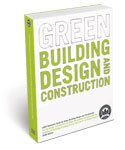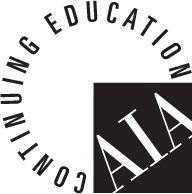No products in the cart.
LEED Trainers Should Be Evaluated Based on These Metrics
In 1998, the United States Green Building Council (USGBC) created the Leadership in Energy and Environmental Design (LEED) rating system to provide a benchmark for the design, construction, and operations of high-performance green buildings. From 1998 to 2008, LEED gained acceptance and respect among the building and construction industry, resulting in more and more professionals seeking LEED trainers to help them with accreditation.
 This was a time when educational resources were few and far between, save for the official LEED training courses hosted by the USGBC and the USGBC Reference Guide books that often provided information in excess of 500 pages. The USGBC eventually moved away from being a training provider, in an effort to encourage competition and a fair marketplace for the industry it had created. Nevertheless, as LEED became more popular, so did demand for knowledge. And many professionals didn’t want to pore over a 500+ page book; many craved an exam prep experience that cut out extra information and only focused on the core testable knowledge.
This was a time when educational resources were few and far between, save for the official LEED training courses hosted by the USGBC and the USGBC Reference Guide books that often provided information in excess of 500 pages. The USGBC eventually moved away from being a training provider, in an effort to encourage competition and a fair marketplace for the industry it had created. Nevertheless, as LEED became more popular, so did demand for knowledge. And many professionals didn’t want to pore over a 500+ page book; many craved an exam prep experience that cut out extra information and only focused on the core testable knowledge.
Now, in 2015, you’ll find LEED trainers and exam prep resources available from a multitude of providers, including USGBC regional chapters, universities, community colleges, consulting agencies, in-house experts at architectural firms, and the traditional exam prep training company. If you’re new to the industry, it can be difficult to determine which outlet is most appropriate and which has the most likelihood of helping you achieve your goal of earning a LEED credential. With so much competition in the industry, what attributes should you be considering when making your decision?
Let’s take a look at the ten most important qualities or features that a LEED trainer should have.
1. Should Be a USGBC Education Partner
USGBC Education Partners are leaders, trusted voices, and reputable providers of green building and sustainability education per USGBC expectations. Since the USGBC no longer offers its own training, the standard-bearing organization relies on its exclusive network of Education Partners to provide LEED exam prep training and therefore supports this particular group of trainers in the pursuit of current knowledge, resources, and skills. The USGBC Education Partner program was developed to provide a stamp of approval for the organizations that met the USGBC’s standards of quality. In an industry with so much competition, this stamp of approval is a quick and easy determinant of an effective training resource. You’ll know when a training provider is a USGBC Education Partner because it will use the following logo on its website…

2. Should Have Qualified Instructors
How do you define a qualified instructor – someone with a bachelor’s degree? Master’s degree? Doctorate? Maybe someone with experience in the architecture or engineering field. Or maybe someone who has a LEED credential. Better yet, maybe someone who has worked on a LEED project. The answer is that you’re looking for instructors that have a combination of these characteristics. Simply having a degree with a concentration in architecture or a related field may not prove to be the most effective for such a specialized training experience. On the flip side, a LEED credential holder with no real-world experience in a construction-related field may also not prove to be effective. Instructors with a combination of attributes are able to pull from a variety of experiences so they not only understand the LEED credits and intents, but they’ll also have a way of using their personal experiences to explain concepts in layman’s terms so you understand them too.
3. Should Be Focused on Sustainability & Green Building
When conducting research on LEED training resources, pay special attention to each provider’s catalog of courses. Is the resource focused exclusively on sustainability, or does the organization offer a slew of training courses for a multitude of industries? The latter may make you question how much subject-matter expertise is available for the discipline in question. For those passionate about sustainability and green building, you might feel cautious about working with an organization that offers a range of training that expands into Human Resources, Finances, Information Technology, etc. Get your training from an organization that cares about sustainability as much as you do.
4. Should Have Flexible Options
Professional development, such as the pursuit of a LEED credential, can be viewed as a time-consuming or inconvenient activity for some working professionals. You may be apprehensive about taking time out of the office to complete a live training course. Look for flexible learning options that go beyond live training, including live webinars, on-demand e-learning, blended webinars, and standalone study aids. With this kind of flexibility, you’re more likely to commit to your goal and integrate your LEED exam prep into your existing schedule.
5. Should Have Excellent Customer Service
Because why would you trust an organization that doesn’t respond to your inquiries or doesn’t provide you with helpful information in a timely manner? The organization that deserves your time is the one that appreciates your questions and is happy to help guide you closer to your goal. It’s not always about a sale. It’s not always about money. The important thing is your goal – what are you trying to achieve? You shouldn’t feel pressured into buying something that doesn’t get you closer to your goal. And, similar to the tip above, flexible options regarding contact may also be beneficial. An organization that has responsive representatives on live chat, email, and phones is one way of measuring customer service.
6. Should Help You Get Continuing Education Credit
 This tip may not apply to everyone, but oftentimes, your occupation will require continuing education credit to remain active. A common example of this is within the architecture industry. Many architects seek continuing education credit to submit to the American Institute of Architects (AIA). Because LEED is a value-add skill set for architects, AIA will provide credit for LEED training courses. It is the responsibility of the LEED training provider to ensure that their LEED course is approved by AIA for this credit. This is not to be assumed of all LEED trainers, so if you’re hoping to kill two birds with one stone (i.e., earn a LEED credential AND earn AIA credit from it), look for a training provider that is approved to offer AIA continuing education credit.
This tip may not apply to everyone, but oftentimes, your occupation will require continuing education credit to remain active. A common example of this is within the architecture industry. Many architects seek continuing education credit to submit to the American Institute of Architects (AIA). Because LEED is a value-add skill set for architects, AIA will provide credit for LEED training courses. It is the responsibility of the LEED training provider to ensure that their LEED course is approved by AIA for this credit. This is not to be assumed of all LEED trainers, so if you’re hoping to kill two birds with one stone (i.e., earn a LEED credential AND earn AIA credit from it), look for a training provider that is approved to offer AIA continuing education credit.
7. Should Have a Commitment to Professionalism and Ongoing Education
What we mean here is that the training organizations you evaluate should make pricing and course information clearly available so that you don’t feel uninformed or hoodwinked. The sustainability industry as a whole is constantly growing and evolving; the rules and requirements in 2014 may not be the rules and requirements in 2015, so it’s important that you can trust the organization in question to be aware of industry changes and to integrate those changes into its products. For example, the USGBC updated its LEED standards in July 2014 to what is now known as LEED Version 4. Before you pursue LEED training with an organization, be sure that they are offering the LEED v4 curriculum. Sustainability educators must feel comfortable with constant revisions to their curriculum. It is the only way to remain current, relevant, and effective in this industry.
8. Should Have Flexible Payment Options
Professional development is all about enhancing your knowledge and skills with the intent of expanding your career opportunities. Sometimes we all need to be understanding and cooperative of each other’s financial situation. Taking advantage of discounts is a great way to stay within your budget and still pursue your goal. At Everblue, we always offer discounts for early registration, military/government, returning students, and refer-a-friend candidates. When you join our email newsletter, you become eligible to receive information about monthly and quarterly promotions too. When you do your research, you’re going to find a wide range of prices for LEED trainers. It’s important to remember that the cheapest option is not always the best option, and there’s a good chance that you’ll end up spending more in the long-run when you string together a series of cheap resources. If you’re serious about passing your LEED exam, you should be looking for the most effective tools, not the cheapest.
9. Should Feature Reviews from its Students
Take a look at the organization’s Testimonials page to get a sense of how professionals like you went through the process. You’ll want to consider the dates of the reviews to ensure that the training that you’re signing up for has been tested and proven by others recently. You’ll want to determine whether the cited name appears to be real or fictional, as this will certainly affect how seriously you take the “recommendation.” You may also want to read several reviews to see which features are constantly receiving praise and which are constantly neglected. This may shed some light on the strengths and weaknesses of a particular training experience. You should be looking for reviews that praise a variety of attributes – that way, if you see multiple features earning acclaim, then you can feel confident that the entire experience has positive effects.
10. Should Fill You With Feelings of Confidence and Success
 Your goal this whole time has been to PASS your LEED exam so that you can add a reputable designation behind your name in your email signature, business card, resume, and LinkedIn. When it comes to earning your LEED credential, you’ll need to have a one-track mind for a period of 3 to 4 weeks. During this time, you’ll want to be surrounded by passionate, knowledgeable professionals – professionals that you feel confident will guide you to success because they’ve already guided hundreds of thousands to success before you.
Your goal this whole time has been to PASS your LEED exam so that you can add a reputable designation behind your name in your email signature, business card, resume, and LinkedIn. When it comes to earning your LEED credential, you’ll need to have a one-track mind for a period of 3 to 4 weeks. During this time, you’ll want to be surrounded by passionate, knowledgeable professionals – professionals that you feel confident will guide you to success because they’ve already guided hundreds of thousands to success before you.
The USGBC does not release exam scores and statistics to its training providers, so any pass rates you see being advertised will likely have come from feedback of students. As a consumer, you know that individuals with poor experiences are often likely to make their concerns widely known. You can trust that when a training provider advertises its pass rate that it has taken into account this type of student feedback. You can also trust that when Everblue says it has a 100% pass rate on the LEED Green Associate v4 exam, it’s because we haven’t received any negative feedback from our students since the LEED v4 exams launched in July 2014.
Are there other factors that you take into consideration when researching your LEED trainer options? Let us know here!
